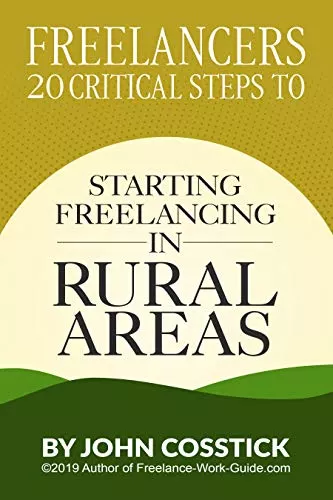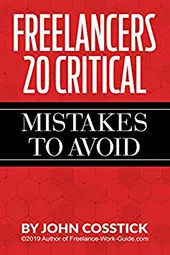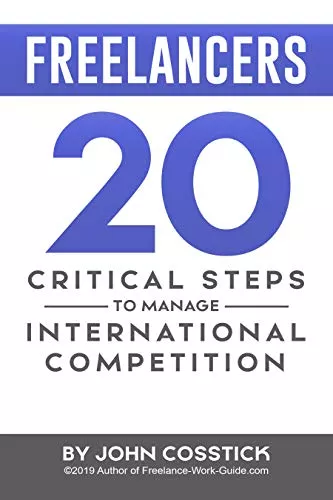If you’re a freelancer looking to connect with businesses with the hopes of securing contracts to boost their web traffic through content creation and link building services, it’s imperative that you make your first impressions count. Drafting a successful business plan and value statement should be top of the agenda.

Here are 10 steps that will help you master this phase in order to maximise your hopes of success.
1. Know The Types Of Value

Before even thinking about writing your value statement, you must first understand the various types of value. Without this foundation of knowledge, you’ll never be ready to pitch your services to prospective clients with any real conviction.
Split your values into the Core Values that make you an individual, the Aspirational Values of what you’re working towards, the Permission to Play Values that you sometimes overlook, and Accidental Values that are the unplanned issues. Control these issues and organization will come easily.
2. Make Your Value Statement Clear

The value statement is your chance to show prospective clients exactly what you do, along with why you are the right person for the business to partner with. Establishing a sense of clarity from the very first moment is essential.
A mission statement that can sum up the goals and USP of your service in a single paragraph is an essential starting point. Meanwhile, the rest of the value statement should be clear, concise, and free from complex jargon unless the client’s brand identity demands it. You cannot afford to lose their attention before you’ve started.
3. Make Your Value Statement Relevant
Highlighting your strengths and capabilities in a clear fashion is one thing but you also need to respect your place in the market. More importantly, you need to ensure that your value statement will appeal to the client or business you’re trying to attract.
While there’s nothing wrong with using a template for the bulk of your value statement, you should tweak the document or presentation by factoring in the client’s individual situation. This can include pinpointing the problems that you can help them with, which will be fully covered by the business plan.
4. Focus On Shared Values
When building the value statement, it’s important to promote yourself so that clients can picture themselves working with you in a positive manner. Every business wants to work with contractors that they can communicate with easily, and shared values will work wonders.
Take the time to write a list of shared core values before pinpointing the five most significant issues. When your value statement focuses on those five, but also touches upon the others, the chances of a client feeling positive about your services are far greater. This will encourage them to actively consider your business plan too.
5. Build A Business Plan That Focuses On Fixing The Problem

Your business plan for winning contracts as a freelancer is somewhat different to the business plan of your own. They might not even be aware of the problem, but your research can easily shine a light on their poor traffic figures.
Highlighting the significance of the problem and how it is restricting them in business should encourage them to take note. When followed by clear points about how you plan to solve their problems through link building and content creation, the benefits of using your services will start to become clear.
6. Use Market Analysis Within Your Business Plan

While you will naturally want to focus on the prospective client and how your digital freelancing services will support them, using real-world examples involving their competitors can be one of the most effective tools of all. Even if you weren’t involved in the transformations.
Market analysis that uncovers how services like yours translated to more traffic and conversions for other businesses using stats and figures where possible. A clear statement such as “business X increased traffic by 10% and conversion rates by 12% in one year” is impossible or the client to dismiss.
7. Create A Business Plan That Gives Options

Businesses like to feel in control, especially when it comes to expenses for third-party services. As such, you should think about offering different tiers of tailored services. This keeps the door open to smaller and bigger projects alike.
Given the choice, a lot of prospective clients will opt to spend less. As such, you’ll want the business plan to take a harder sale when pushing the more comprehensive service. Nonetheless, securing any freelancing contract is better than nothing. Closing the door on a client because they don’t have the budget you hoped would be madness.
8. Show References Within Your Business Plan

While this isn’t quite a job interview, prospective clients need to know that you can be trusted to deliver the goods as described. One of the easiest ways to do this is to show them testimonials from previous clients that are happy with what you provided.
When those references can be backed up by statistical evidence of how you improved their ventures, it should spark a far better response from the client in question. Again, you should look to relate the data back to the proposed project of content creation and link building. It always needs to be about the client.
9. Think About Timescales Within The Business Plan

A thorough business plan needs to take a practical approach, and adding the financial elements is only one key aspect. If you are promising to actively improve a business, you’ll also need to plot the timescales in which they can expect to see those rewards.
We live in a world where the demand for quick progress is greater than ever. If the business plan highlights the quantifiable results that can be enjoyed in a short space of time, further supported by long-term benefits, there’s every chance that the business owner will look positively on the proposal. Particularly if you’re saving them a lot of effort.
10. Build A Business Plan That Has Clear Objectives
The objective of the business plan is already defined by the features mentioned above. However, you should try to set out the plans that you have. Set targets for month one, month three, month six, month 12, and so on.
If nothing else, it helps the business owner visualize the impact that your work can have on their venture. Furthermore, the fact that you’re thinking about the long-term can encourage trust and show that you are reliable. When combined with all the other features above, this should give you a great shot at getting the answer you crave.
Would you like to know more, then look inside this eBook:















